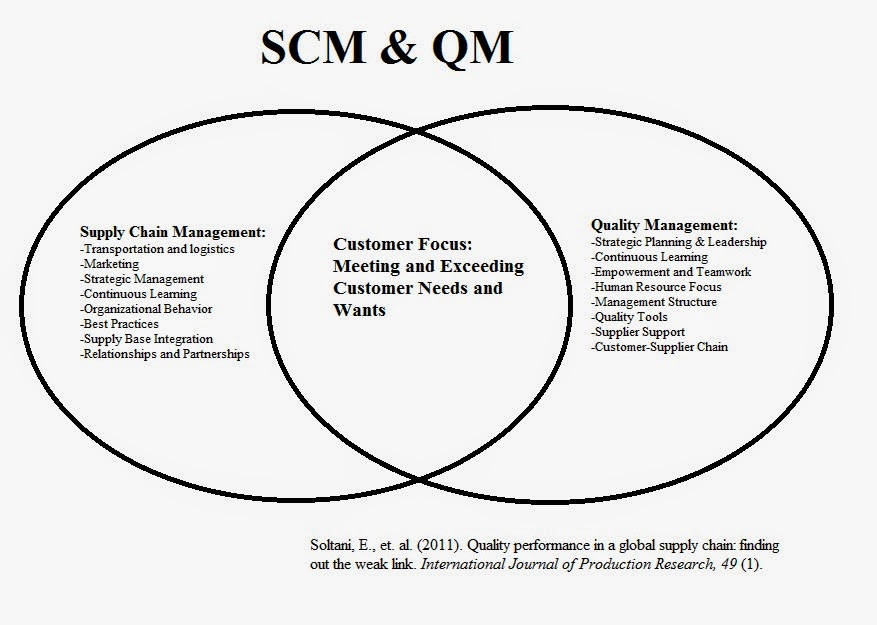Supply chain management is a noteworthy avenue for
product reach and emerging financial efficiencies. Products are sold online and
distributed across the globe placing greater pressure on organizations to enhance
delivery networks. Consumers in the 24/7 virtual world want to receive their products
in a few days regardless of the country of origin. Research by Soltani, et. al.
(2011) investigated the relationship between supply chain management (SCM) and
Quality Management (QM) systems that further makes the case for improvements in
inter-firm collaboration that enhances upstream and downstream efficiencies.
In the global economy the supply chain is the life
blood that keeps products moving through arteries/vines that wind their way
through the hearts of companies and countries. A product built in the U.S. may move through a
number of different entities and nations in adherence to negotiated treaties
before delivered at the consumer’s doorstep. Company competitive positions are impacted by
how the system works together through quality improvement to ensure high
performing networks (Yeung, 2008).
A strong supply chain network requires greater
collaboration of partners to successfully move products quickly, effectively,
and efficiently from one continent to the next. Supply chain quality management
is a systems-based approach that develops improvements in the upstream and
downstream linkages between suppliers and customers (Foster, 2008). Upstream and downstream being relative
positioning on the chain but is often designated as the manufacturer who
receives upstream materials and sends the products downstream to consumers.
Understanding the upstreams, downstreams and the way
in which seemingly disjointed parts work together requires systems
thinking. Systems thinking, or otherwise
termed systems dynamics, are a mental concept of how the whole of the entity
may be different than the sum of its parts (Metz, 2012). In the case of supply
chains, each of the individual parts works together to create real value that converts
to organizational profit. Quality management ensures that slack and inefficiencies
are removed from the system to create better flow of information and products.
Each supply chain requires albeit costly investment
to set up, develop and maintain.
Different companies within supply chains often engage in opportunistic
behaviors and become uncooperative which results in lower overall quality and
effectiveness (Brown et al. 2000). Companies that monitor these relationships find
greater symmetry between the varying elements and develop powerful competitive
advantages. In the global world, shaving a few percentages off the costs or
improving speed of a multi-national firm’s operations leads to significant acceleration
of growth.
The authors found that many of the companies focused
on their internal structures for five years before moving externally into their
supply chains. The ability to integrate the upstream and downstream business
activities into a cohesive whole requires quality-focused supply chains that build
connections between intra and inter firm operations. The development of quality was further
enhanced by a global manager that was able to understand the system and make
collaborative versus adversarial relationships among the supplier,
manufacturer, and customer legs of the supply chain triangle.
Brown, J. et. al., (2000). Managing marketing channel opportunism: The efficacy of
alternative governance mechanism. Journal
of Marketing, 64 (2), 51–65.
Foster, S. (2008). Towards an
understanding of supply chain quality management. Journal of Operations
Management, 26 (4), 461–467.
Metz, S. (2012). Systems thinking. Science Teacher, 79 (7).
Soltani, E., et. al. (2011). Quality
performance in a global supply chain: finding out the weak link. International Journal of Production Research,
49 (1).
Yeung, A.(2008). Strategic
supply management, quality initiatives and organizational
performance.
Journal of Operations Management, 26
(4), 490–502.


No comments:
Post a Comment